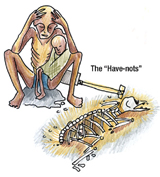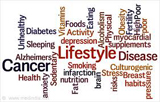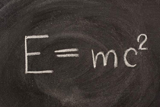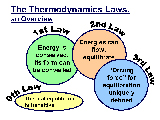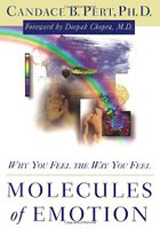Practice of medicine
Patients and the art and science of healing
Abstract
Besides managing their bodily afflictions, patients have to confront the cold impersonality and crass commercialisation of the healthcare delivery mechanism. New advances in the realm of medicine do give hope but these are mostly futuristic in nature. Besides medicine, exercise and food, the real succour available to patients is in the form of an inner connection with the soul, faith, sincere prayer, a sunnier disposition and some service to those who happen to be less fortunate than them.
Whosoever coined the term ‘patient’ in the distant past was indeed blessed with some degree of prescience. He could foresee that the poor soul will have to earn this exalted status in life the hard way. He would need to patiently await his turn in long serpentine queues at hospitals and at doctor’s clinics. He would have to be patient with his bank balance when it starts depleting the moment he is examined by a doctor. He would need to be patient and suffer the ignominy of undergoing all the tests prescribed. He would then again have to patiently wait to report back the results to the doctor concerned. Nerves of chilled steel would be required to consume all the medications written out illegibly on a piece of paper. His reserves of patience would once again be called upon to mitigate his suffering when side-effects of the drugs start tormenting him.
A singular challenge faced by patients of all hues, sizes and shapes these days is that of continuity. Family doctors happen to be a tribe which has become almost extinct by now. Gone are the days when a personal rapport with the family doctor could work wonders, or when the emphasis used to be more on physical examination and the symptoms of the patient rather than on excessive medical tests.
The ‘haves’ and the ‘have-nots’
In a dichotomous health-delivery market like that of India, we have the multitudes of ‘have-nots’ who struggle to make two ends meet. For them, a challenge on the health front is not the very first priority to be handled. The question of survival itself comes first. When the body simply revolts and there are no options left, they turn to government-run centres and hospitals and make do with whatever facilities they are able to access.
Not so for the well-heeled ones. They have the means to avail the services offered by swank hospitals run by the private sector. Recourse to fancy insurance schemes becomes helpful. In any case, since health is held to be more important than wealth, a slice of the latter getting lost to restore the former is seldom bemoaned. On the contrary, the massive cost incurred on a hospital stay gets worn on their slick sleeves much like a proud soldier would display his medals earned on the war front, and comes in pretty handy for an uplifting ego boost.
They get to pick and choose. Word of mouth often helps. Brand recognition helps. When an emergency comes up, distance becomes the determining factor.
Upon entering such institutions, the patient is spoilt for choice. Options for accommodation include air-conditioned special rooms, deluxe air-conditioned rooms and even super-deluxe suites. He is then put on an assembly line and subjected to awe-inspiring medical diagnostics. The fear of the unknown on the part of the patient helps the corporate body to fulfil its obligations towards its shareholders. When a surgery is deemed necessary, the kind cruelty of a surgeon’s knife also ends up drilling a gaping hole in the patient’s pocket. Admittedly, the patient has the satisfaction of having been in safe hands and possibly also getting the necessary relief.
Sandwiched between these two layers of society are the not-so-well-heeled. They detest the dingy corridors and the surging crowds in public institutions. They place their trust in the private outfits, get exploited financially and end up missing the objective healthcare advice dished out by medical practitioners in the government clinics and hospitals.
A supermarket approach to getting healed
Those who are well-heeled and suffer from lifestyle diseases have an even wider choice available to them. They are like true customers in a market economy which could be best characterised as ‘laissez-faire’. Hospitals and clinics in the private sector advertise their wares smartly and entice such customers to avail their services. Once a patient has enrolled himself, a Customer Relationship Management software takes over. Greetings on birthdays and anniversaries, special screening camps, package deals — these are but some of the pretexts which are used to woo the patient for his next round of illness.
The well-heeled also have the luxury of choosing the system of medicine they wish to pursue. Allopathy is believed to be providing only interim succour or, as in most cases, a basic relief. A regimen of popping the pills, exercise and food habits gets prescribed. Once they have become used to the same, life runs in an auto-pilot mode.
The well-heeled explorers
But human nature is always on the lookout for refinements and the proverbial icing on the cake. A sense of creative dissatisfaction prevails. Despair and despondency soon take over and the search starts for an alternate system of healing. New frontiers get explored. New therapists get met. Merits and demerits of various kinds of treatments on offer get analysed threadbare by those around, while the patient experiences the inner glow of satisfaction at being the centre of continued attraction and also at exploring new frontiers, much like a Columbus on a maiden voyage to discover Newfoundland.
This is not to say that an explorer-type attitude can be scoffed at. It reveals a sunny disposition to be a part of the inner being. The soul, unhappy at being burdened with a physical sheath which is infirm, merely endeavours to attain a state of perfection in the body allotted to it during a particular birth-cycle. It uses all the powers at its command — analytical or intuitional — to achieve good health. It tries to bring about better harmony between its body, mind and soul. Wisdom gleaned from the medical fraternity as well as from the scriptures assists the soul in this task.
Some insights from the realm of science
The patient also gets to revisit some of the long-forgotten science lessons learnt in the early years of his life.
Einstein’s theory of relativity
It gets understood more easily when a minute spent on a treadmill seems like fifteen minutes’ snoozing on the bed. Thirty minutes spent on a dentist’s reclining chair feels like thirteen hours spent in the company of one’s mother-in-law.
The mystery of the formula linking energy and mass also unfolds. Wisdom eventually dawns that E (Energy and Enthusiasm) to achieve a heightened state of well-being is equal to the product of ‘m’ (mental peace and positivity) and ‘c’ squared, where ‘c’ stands for conviction or faith in the treatment opted for.
Much like the speed of light, each kind of treatment has a unique upper limit to heal, beyond which one moves into the realm of prayers, divine intervention and spirituality. This is a universe which is surely not governed by the conventional laws of science as we understand them today.
First Law of Motion
Newton is found to be dead right when he postulates that a stationary object moves only when an external force is applied to it. When a couch potato is told by the good doctor to exercise regularly, much will-power needs to be summoned. Social challenges like the sudden appearance of a maid servant or the newspaper boy to collect his dues need to be handled. Startled glares from a younger person living across the street have to be summarily ignored. Presence of relatives and friends has to be managed. Ridicule hurled at one from any quarter needs to be summarily rejected, so the object, in this case the health-seeker’s physical body, can get moving.
Non-linear regression analysis Harsh slings and arrows of life make the patient understand that bodily afflictions are not necessarily explained by a linear formulation in mathematics. When it comes to good health, the link between cause and effect is never straightforward. Variables like mental attitude, reserves of will power, social mores, genetics, biological factors, environmental constraints, spiritual propensity and perhaps even factors beyond our present frontiers of knowledge need to be considered.
A person who is a chain-smoker survives much longer than a non-smoking one who gets diagnosed for cancer much earlier in his life. Someone who is a happy-go-lucky person lives life to the hilt even with several arterial blocks whereas someone who takes a dim view of life in general needs to undergo repeated surgical interventions.
Laws of Thermodynamics
The patient may find that even Laws of Thermodynamics apply to the realm of lifestyle afflictions:
Zero-th Law
If two persons with a lifestyle disease are in the equilibrium of a stable relationship with a lifestyle disease and lead their lives as per the Principle of Peaceful Coexistence with the said disease, it follows that they could develop a good relationship with each other as well.
First Law
The Law of Conservation of Energy applies. There is a limit to which a patient may exercise to remain fit. Other activities may have to be given short shrift so a regular exercise regimen may not suffer.
Second Law
Over time, entropy or disorder is bound to increase in an entity comprising a body, a mind and a soul relationship. The only way-out is to keep cleansing one’s system of negative thoughts at regular intervals. By means of meditation, the patient can keep creating inner space for positive thoughts to come in and hold sway.
Some crystal gazing
Add to all this, the growing uncertainty of disruptive technologies and the cause-effect equation of well-being becomes even more complex.
If one were to attempt some crystal gazing in the field of medicine, the results could cheer up a lay patient. A pill to dissolve and cure cataract could revolutionise eye-care. Early detection of a would-be patient’s disposition to develop diabetes could lead to preventive lifestyle changes which could save millions from getting into the clutches of this dreaded affliction. 3-D printing of living tissue can be used to make body parts.
The implications are mind-boggling. But the fact remains that advances in medical science would merely touch the sheath and not the core of an individual patient — the soul.
Faith and the sincerity of prayer
More than a century back, Quantum physicists confirmed what our sages had held long back — our thoughts determine the reality we experience. perhaps our physical body is only a holographic projection of our consciousness. So, if we have a genuine intention to heal, have an abiding faith and entertain positive thoughts and if our prayer is sincere enough, a state of better health would follow.
The challenge for a patient, therefore, is to elevate his consciousness to a level where he gets an insight to heal himself. In her book, Molecules of Emotion, Candace Pert had indeed predicted that the time is not far off when a patient with a headache will simply sit in a quiet corner to meditate to elevate his consciousness to get total relief from headache instead of popping some inane painkiller pills.
A state of bliss with no date of expiry
Undoubtedly, a patient faces a multi-faceted challenge. Besides the art of managing the affliction itself, he has to learn the science behind his disease. He needs to confront the forces of commerce which drive healthcare today. Newer discoveries in medicine do give him hope for a healthier future, if not for him but at least for some of his fellow beings.
Nature provides each patient with a physical body which comes with an inbuilt feature of planned obsolescence. But the indomitable spirit and the innate tendency of the soul to be blissful does not come with any date of expiry. Besides medication, exercise and proper food, his source of relief is his conscious effort to nurture the connection with his own inner self. Having faith in the medical system he decides to follow surely helps. So does a sunnier outlook and his endeavours to serve those less fortunate than himself.
Ashok Kumar Bhatia is a management advisor and writer who lives in Pondicherry, India. He blogs at www.ashokbhatia.wordpress.com.
Share with us (Comments,contributions,opinions)
When reproducing this feature, please credit NAMAH,and give the byline. Please send us cuttings.


